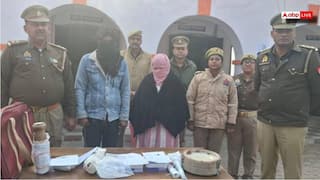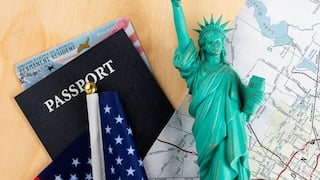Chauri Chaura And The Destiny Of India

What is Chauri Chaura? It is the name of a dusty market town not far from Gorakhpur, Uttar Pradesh, where on this day, 100 years ago, the destiny of India may have been decided—and quite likely in ways that we have yet to comprehend. Chauri Chaura boasts several martryrs’ memorials, in memory of those who gave up their lives to secure the country’s freedom from the yoke of colonial rule, and some years ago the Indian Railways named the train that runs from Gorakhpur to Kanpur the Chauri Chaura Express. Nevertheless, Chauri Chaura does not sit well besides the Champaran Satyagraha, the Salt March, or the Quit India Movement in the narrative of ‘the freedom struggle’ as a place that is to be remembered for the glory that it brought upon the country. It is both present and absent in the national memory.
In early 1922, India was in the thick of the noncooperation movement (asahayoga) that Gandhi had launched in 1920. The Khilafat movement had also taken hold of north India. The Gorakhpur Congress and Khilafat committees had taken the lead in organizing volunteers into a national corps, and volunteers had branched out into villages to secure pledges of noncooperation, persuade people and traders to boycott foreign cloth, and help in picketing liquor shops. The police sought to crack down on such political activity, occasionally wielding the baton on a volunteer, and there was tension in the air.
On February 5, though some sources say February 4, a procession of volunteers sought to blockade the local bazaar at Mundera and made its way past the local police station where the thanedar issued a warning to retreat. The crowd responded with taunts and jeers; the thanedar in turn fired some bullets in the air. The apparent impotence of the police further emboldened the processionists; as the historian Shahid Amin has recounted, they rejoiced with the proclamation that ‘bullets have turned into water by the grace of Gandhiji’. Then came the real bullets; three men died and several more were wounded. Incensed, the crowd pelted the policemen with stones and pressed on, and the policemen retreated into the police station. The crowd bolted the door from outside and set fire to the thana with kerosene from the bazaar. Twenty-three policemen died: most were burned to death, and those who survived the flames were hacked to death.
The colonial state moved promptly to exact retribution. In police language, ‘the rioters had absconded’, but the precise identity of those who had partaken of ‘the crime of Chauri Chaura’ mattered less than the fact that mere association, signified for instance by having signed the pledge of noncooperation, was enough to establish guilt. Neighboring villages were raided; suspects were ferreted out of hiding and rounded up; and before too long 225 men were charged and brought before the session court for a speedy trial. Nineteen of the 172 men sentenced to death were eventually sent to the gallows. They are now remembered as the ‘martyrs’ of Chauri Chaura.
No one, understandably, was as shaken up by the incident at Chauri Chaura as Mohandas Gandhi, already anointed the Mahatma. Gandhi had pledged to bring swaraj to the nation in one year if the country was prepared to accept his leadership and adhere strictly to principled nonviolent resistance, and the Congress was on the verge of launching a campaign of ‘mass civil disobedience’ for which Gandhi had assigned responsibility to Sardar Patel. On February 8, Gandhi wrote a confidential letter to members of the Congress Working Committee where he described himself as ‘violently agitated by the events in the Gorakhpur District’. He also hinted that he was thinking of calling for the suspension of the Bardoli satyagraha: ‘I personally can never be a party to a movement half violent and half nonviolent, even though it may result in the attainment of so-called swaraj, for it will not be real swaraj as I have conceived it.’
Gandhi’s biographer, D. G. Tendulkar, wrote that he was at this time ‘the generalissimo of the Congress’; some others were inclined to use harsher language and would have characterized him as the ‘dictator’. Gandhi was of the view that the ‘mob’ violence at Chauri Chaura had shown that the country was not yet ready for swaraj. The nonviolence of most Indians was the nonviolence of the weak, embraced not from conviction or even from an understanding of what is entailed by ahimsa, but only because it was expedient to use it among a people who were almost entirely unarmed. Nonviolence was for Gandhi never merely a policy to be adopted or dropped at will, nor was it even just a mode of offering resistance; it was the only way of being an ethically informed person in the world. The conduct of volunteers pledged to use nonviolence had brought before him the palpable truth that India was far from being ready to embrace nonviolence, and that the continuance of the noncooperation movement boded ill for the country’s future. Consequently, he prevailed upon the Congress Working Committee meeting at Bardoli, Gujarat, on February 11-12, to suspend the movement; moreover, the committee passed a resolution ‘deploring the inhuman conduct of the mob at Chauri Chaura in having brutally murdered constables and wantonly burnt the Police Thana and tenders its sympathy to the families of the bereaved.’
It was but inevitable that the decision to suspend mass civil disobedience would be met with a storm of criticism. His critics declared that, though the decision had come down from the Congress Working Committee, there was no question that it had done so at the behest of Gandhi. The Mahatma was much lesser a person than he was made out to be, some charged, since he could not countenance opposition to his views and had acted unilaterally and with his customary authoritarianism. The other serious charge was that Gandhi had shown poor judgment: if he knew the country was behind him, he should also have known that India was on the cusp of freedom and that British administration had in some places been virtually paralyzed. Jawaharlal Nehru, writing his autobiography in 1941, recalled the mood at the time: ‘The sudden suspension of our movement after the Chauri Chaura incident was resented, I think, by almost all the prominent Congress leaders—other than Gandhiji, of course. My father (who was in jail at that time) was much upset by it. The younger people were naturally even more agitated.’ It is sometimes said that Bhagat Singh, who was all of 15 years old at the time, was shattered by the decision—and that the revolutionary movement was born off the disenchantment with the thinking of the Mahatma.
‘I see that all of you are terribly cut up’, Gandhi wrote to Jawaharlal, ‘over the resolutions of the Working Committee. I sympathize with you, and my heart goes out to [your] father.’ But to the argument that Motilal, Jawaharlal, Lajpat Rai, and many others had put forward, namely that it was absurd to let the unruly behavior of a ‘mob of excited peasants’ in some ‘remote village’ permit the outcome of a national movement, Gandhi had a clear and unequivocally straightforward reply that he issued in Young India on February 16. Tendulkar has been nearly singular in recognizing, quite rightly, Gandhi’s long statement as ‘one of the most extraordinary human documents ever written.’ Gandhi explains why he commenced a five-day fast on February 12 and why he feels it necessary to undergo penance (prayaschit), and then cautions that the violence in Gorakhpur district should not be viewed as an aberration: ‘Chauri Chaura is after all an aggravated symptom. I have never imagined that there has been no violence, mental or physical, in the places where repression is going on.’ In modern everyday parlance, the violence there was a wake-up call: ‘The tragedy of Chauri Chaura is really the index-finger. It shows the way India may go, if drastic precautions be not taken.’
It is, in the historiography of Indian nationalism, a settled matter that Gandhi made a catastrophic mistake in calling for the suspension of the noncooperation movement. His own reputation, on the standard account, took a nosedive; just a few weeks after the incident, he was hauled into jail on charges of sedition and fomenting disaffection against the government, and at a trial on March 20 he was found guilty and sentenced to a six-year term in prison. For some years, Gandhi even appeared to some to have disappeared from the public view. It would be another twenty-five years before India would attain independence, and his assassin was not alone in arguing that the supposed architect of Indian independence may have set back the cause of Indian freedom. It is, of course, a contrafactual to argue that India may well have been free long before 1947 if Gandhi had not imposed his will on the Congress and pressed for a suspension of the civil disobedience movement. But is another view possible?
In the years after Chauri Chaura and his release from prison, Gandhi would go on to grab the world’s attention with the Dandi march. His tour through strife torn Noakhali and his fast in Calcutta have been mentioned as among the most heroic moments in an epic life. Chauri Chaura is, when not seen as a blot, largely obscured in the narratives. I wish to suggest that, in withdrawing mass civil disobedience, Gandhi was extraordinarily daring and took what can be viewed as one of the boldest steps in world history to secure politics on an ethical footing. That colonial injustice was writ large did not allow him, in his view, to exonerate the participants in what he with characteristic bluntness called ‘the crime of Chauri Chaura’. The question of means in relation to ends in politics is inescapably present to those who have aspire to an ethical framework of action, but Gandhi’s much loftier conception of the ethical life did not lead to the calculus where the interests of a nation could be placed before the lives of even a few individuals. Who, he asked, was prepared to wipe the tears from the faces of the widows of the butchered policemen? It is possible to argue that if India, far more so than most other countries that would be set on the path of decolonization, could persist with democracy and not slide into authoritarian political rule or military dictatorship, it may have had to do with Gandhi’s own principled adherence to nonviolence and the manner in which he took India along with him on that journey.
It is thus not ‘the crime of Chauri Chaura’ but rather the miracle of Chauri Chaura that we are called upon to think about at this critical juncture in the country’s history when Gandhi is openly derided.
(Vinay Lal is a writer, blogger, cultural critic, and Professor of History at UCLA)
[Disclaimer: The opinions, beliefs, and views expressed by the various authors and forum participants on this website are personal and do not reflect the opinions, beliefs, and views of ABP News Network Pvt Ltd.]


























